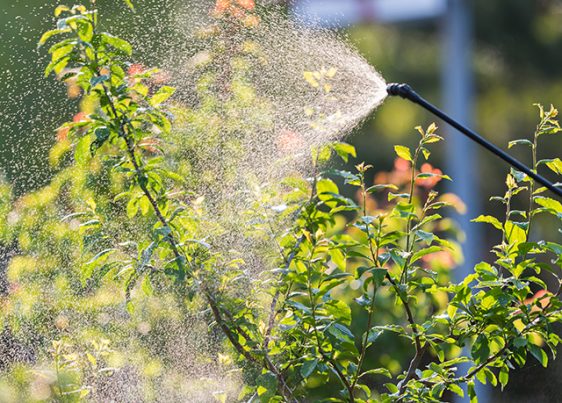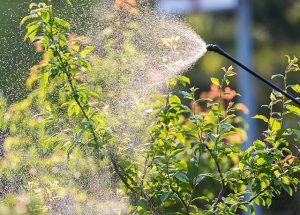
Flubendiamide — toxicity, side effects, diseases and environmental impacts
Saturday, December 02, 2017 by Janine Acero
http://www.naturalpedia.com/flubendiamide-toxicity-side-effects-diseases-and-environmental-impacts.html

Flubendiamide is an insecticide that operates by a highly specific biochemical mode of action. It acts against lepidopterous insect pests such as armyworms, bollworms, corn borers, cutworms, diamondback moths, fruitworms and loopers. It is applied as foliar treatment by aerial, ground or chemigation application. Formulations come in water dispersible granule, soluble concentrate and manufacturing concentrate.
Flubendiamide is registered for use on corn, cotton, tobacco, pome and stone fruit, tree nut crops, grapes and various vegetable crops (cucurbits, fruiting vegetables, leafy vegetables, etc).
Flubendiamide is the International Organization for Standardization (ISO)–approved name for 3-iodo-N′-(2-mesyl-1,1-dimethylethyl)-N-{4-[1,2,2,2-tetrafl uoro-1-(trifl uoromethyl)ethyl]-o-tolyl}- phthalamide.

List of known side effects
Animal models in experimental exposures to flubendiamide have shown the following side effects:
- Eye enlargement, opacity, exophthalmus with hemorrhage
- Mild microcytic anemia
- Piloerection
- Red or brown staining around the eyes
- Decrease of locomotor activity
- Tremors
- Deep respiration
- Hypothermia
- Mydriasis
- Abnormal gait
- Decreased muscle tone
Flubendiamide is not irritating to the skin and eyes of rabbits and is not a skin sensitizer, based on further animal tests.
According to the U.S. Environmental Protection Agency (EPA) Pesticide Fact Sheet, flubendiamide is considered “not likely to be carcinogenic to humans”. It is concluded that flubendiamide is unlikely to be genotoxic.
Body systems affected by flubendiamide
Primary target organs identified were the eyes, liver, thyroid and kidneys. Flubendiamide was also shown to have nicotinic effect on the central nervous system, and may affect the reproductive system as well, based on animal studies.
Items that can contain flubendiamide
Residues of the insecticide flubendiamide can be found in a wide range of plants and crops, which include:
- Alfalfa
- Almond
- Apple
- Barley
- Beans
- Brassica
- Buckwheat
- Clover
- Legumes
- Millet
- Oats
- Okra
- Peas
- Rice
- Rye
- Sorghum
- Soybean
- Teosinte
- Triticale
- Wheat
The following products contain flubendiamide as an active ingredient:
- Belt
- Fame
- Fenos
- Synapse
How to avoid flubendiamide
The following are some of the protective measures and first-aid in handling, mixing and applying flubendiamide.
- Wear safety glasses with side shields (or goggles). Immediately flush contaminated eyes with running water in case of direct contact. Remove contact lenses first, if applicable.
- Wear protective gloves and protective clothing. Carefully remove any contaminated clothing item, avoiding contact with skin. Wash the contaminated part with soap and water.
- Wear the proper workplace respirator. In case of chemical aspiration, find a well-ventilated area or go outside where there is fresh air.
- Do not eat, drink or smoke near any chemical. In case of accidental ingestion, do not induce vomiting. If vomiting occurs, lean patient forward or place on the left side (head-down position, if possible) to maintain an open airway and prevent aspiration. Seek immediate medical attention.
- Refer to the workplace regulations regarding proper handling of equipment before applying chemicals.
Where to learn more
Summary
Flubendiamide is an insecticide that acts against lepidopterous insect pests. It is registered for use on corn, cotton, tobacco, pome and stone fruit, tree nut crops, grapes and various vegetable crops.
Flubendiamide is “not likely to be carcinogenic to humans” but can affect the eyes, liver, thyroid and kidneys, as well as the central nervous system.
Sources include:
Tagged Under: Tags: Flubendiamide





